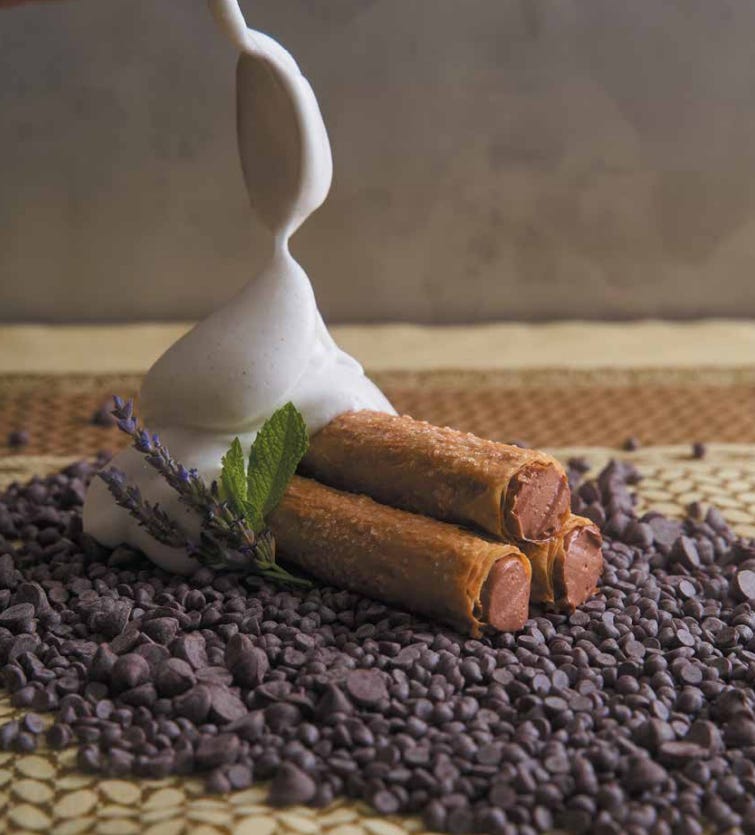A glass cannoli is a revelation
The avalanche of micro-crunches shatters your expectations for what tofu can be. But not all glass cannoli are made equal. Here’s my attempt to foolproof this technique.
What is a Glass Cannoli?
Recipe testing for Broken Cuisine, Chef David Lespron came up with the ingenious idea of brushing thin yuba with simple syrup, stacking the layers, and baking. The result is not like a traditional cannoli, which crumbles like a cookie. Rather, the shell shatters in a glassy way.
Or more specifically…
Your teeth pierce the top shell. Loosely stacked layers, crisped up in contorted orientations, encase dozens of small air pockets. As they’re crushed, these little pockets let out gentle crackles.
As your teeth break through the top, in a rapid *chomp*, they’re met with a soft ganache. Your teeth cascade downwards. There’s no resistance.
In an instant, they land on the bottom shell. Unlike the crackly top, the bottom is a hard landing. There’s crunch.
In a second, crunch turns to powder, and dissolves.
Assuming you made it right…
By identifying the sensations we want to achieve, and a little recipe testing, it’s easy to foolproof this recipe.
To maintain a crackly top, we must…
Stack layers gently, rather than press them together.
Not use wet yuba. (It’s heavy and will collapse and stick together.)
Not use conventional yuba. (It will become tough, not crackle.)
For a crunchy bottom, we must…
Not use dry yuba. (Rehydrate by covering with a damp paper towel.)
Not use conventional yuba. (It will become tough.)
Don’t overbake.
For a shell that dissolves, we must…
Not overbake.
Not use dry yuba.
Of course, there are numerous ways to build off the basic glass cannoli, whether that’s adding chunky things between layers to enhance air pockets, frying, basting with oil… More on that in later weeks.





